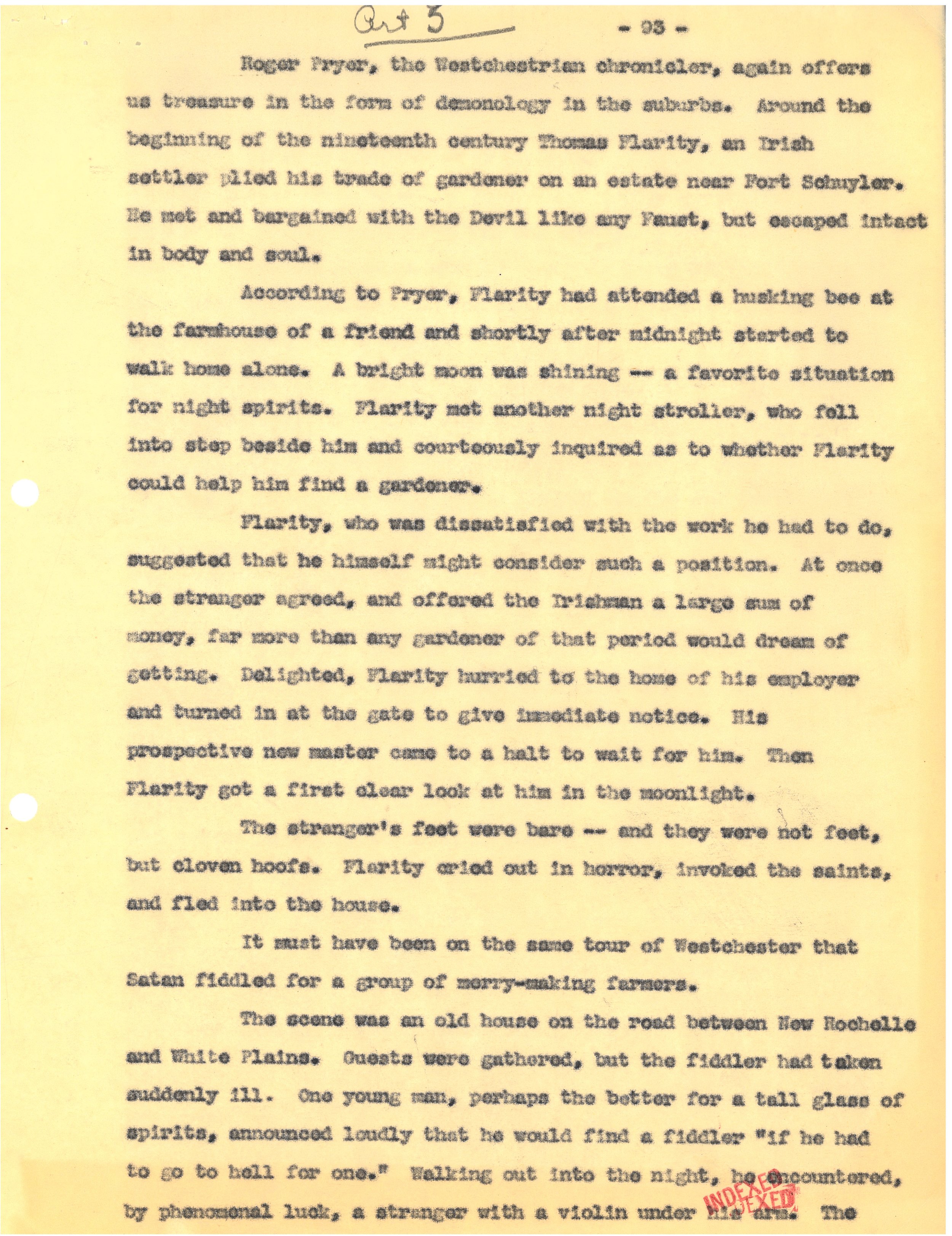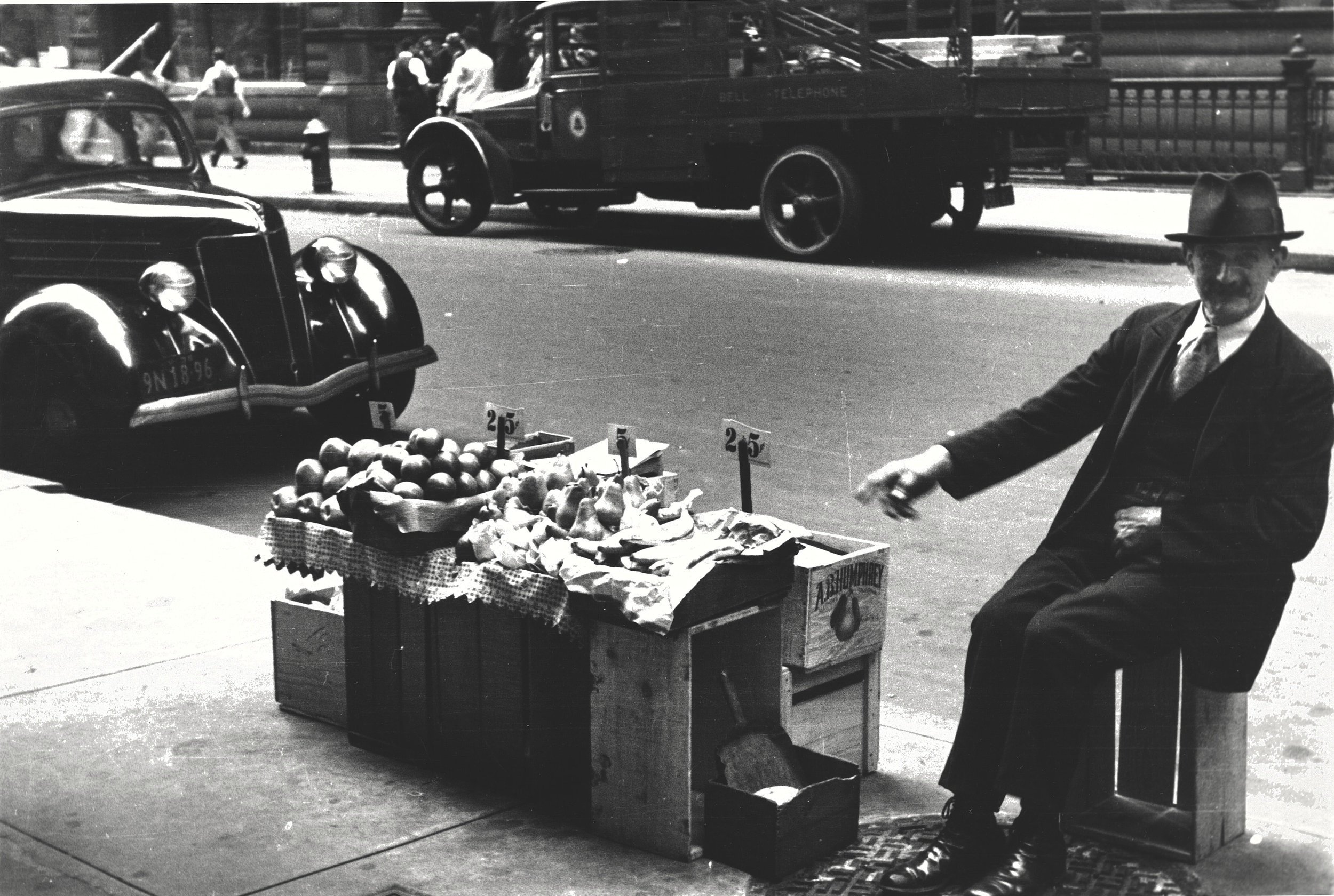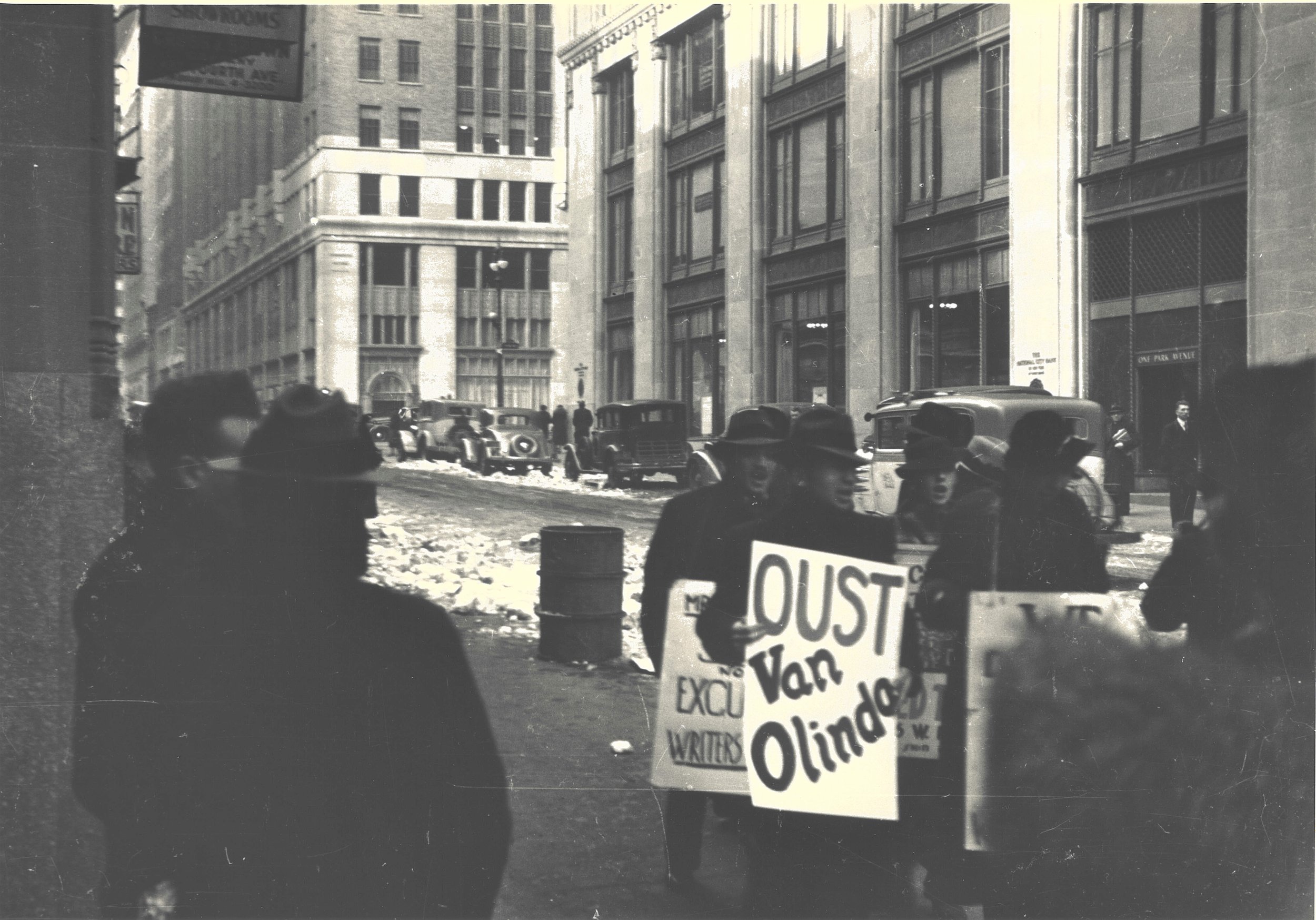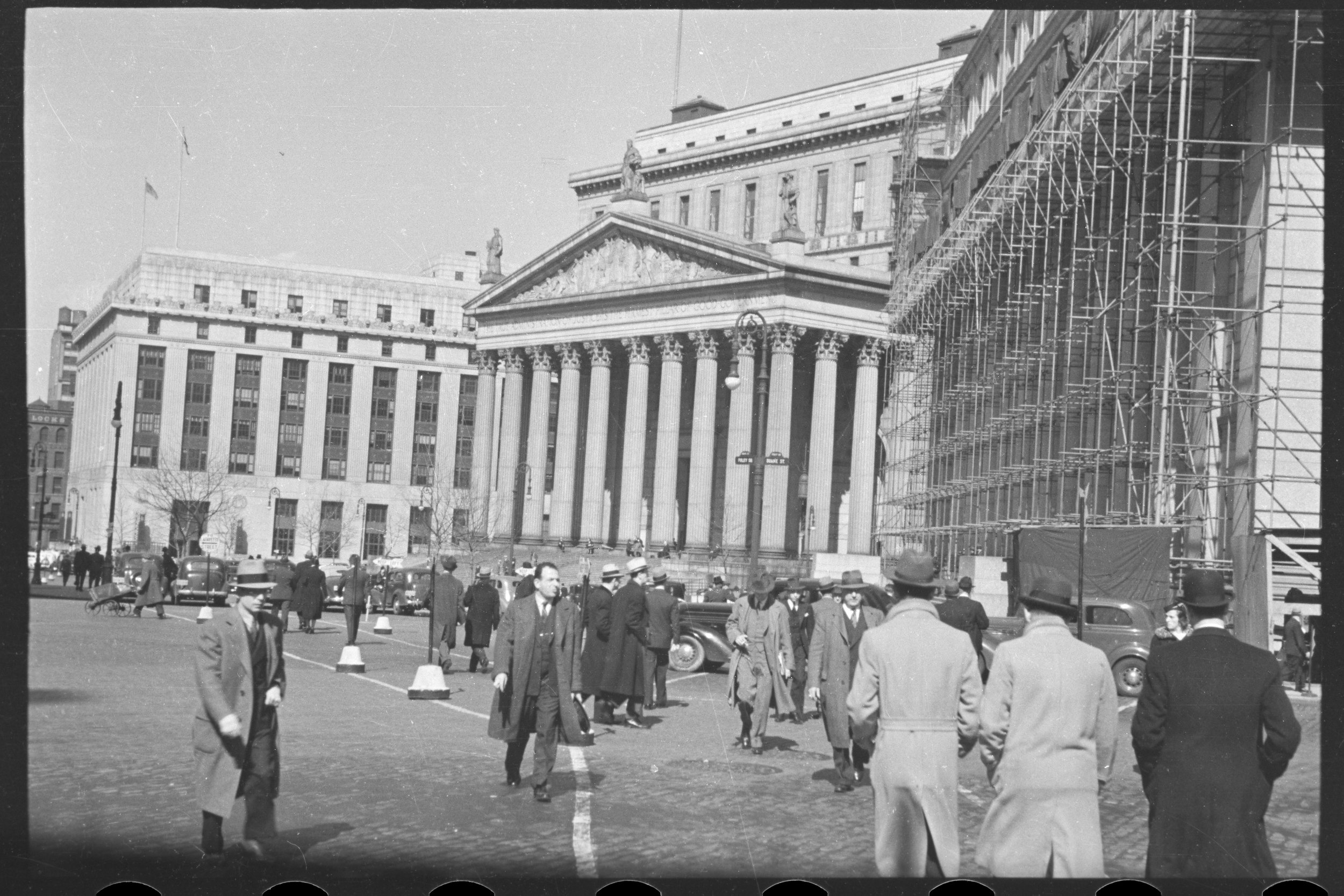New York City loves its holiday seasons. Whether it is the Macy’s Thanksgiving Day Parade, the Lunar New Year, or the lighting of the tree at Rockefeller Center, New Yorkers participate in major seasonal celebratory touchstone events. Halloween is no exception, and what better pastime to celebrate the scariest season than to share ghost stories?
This week For the Record highlights stories of the paranormal recorded by the WPA Federal Writers’ Project in the 1930s. Housed at the Municipal Archives the WPA Federal Writers’ Project collection contains a wealth of material that examine multiple facets of New York City life. Established in 1935, the Federal Writers’ Project was an important wing of the overall WPA. It employed an army of writers to document, publish, and preserve the local histories of every state and territory. New York City, like other major cities, received its own specific guide from the project as well. The Municipal Archives is fortunate to house many of the working files of the writers assigned to document New York City.
The Walton House, Pearl Street, New York. Valentine’s Manual, 1857. NYC Municipal Library.
Researchers familiar with the Municipal Archives may have already used elements of this collection in their studies. The WPA Federal Writers’ Project conducted the Church Records Survey, a very popular resource for researchers, but this only represents a small portion of the entire collection. Totaling 64 series and roughly 165 cubic feet, the entire collection is a valuable source of ethnographic, sociological, and cultural content. One series is particularly relevant to this season.
Series 28 of the Federal Writers’ project is titled “Look Behind You (Psychic Phenomenon) 1937-1938.” The records contain information on various aspects of the history and study of psychic phenomena and folklore in the United States, particularly in New York City and environs. Research on demonology, famous spiritualists, ghosts, haunted houses, psychic painting and photography, Native American spiritualism and folklore, witchcraft and other aspects of psychic research is included. The records document the efforts to assemble the information for both a popular historical and contemporary account of the study of psychic phenomena and folklore in the US. A draft manuscript was produced but there is no evidence that it was ever published.
Walton House, Sitting Room, 2nd Story. Valentine’s Manual of 1857, NYC Municipal Library.
The first highlighted story recounts the tale of an ill-fated sea captain named Guilford Walton. He was a resident of the Walton House in Franklin Square in lower Manhattan. He was a mysterious man, but residents of the house claimed he was a respectable individual. However, the captain soon began to mysteriously, much like his arrival, waste away.
It appears there was some “entity” hunting the unfortunate captain. Who knows what truly happened to Guilford Walton on that fateful night? Did the hard years at sea finally take their toll on the ex-sailor, or was there truly something hunting him? Additionally, what happened to the creature if it did exist? Despite the efforts of Walton’s comrades, the suspect was never caught. The Walton House and Franklin Square no longer exist so potentially the creature’s lair was demolished as well, or it possibly found a new home somewhere else in Manhattan?
The undead are not the only creatures who stalk the night. Some New Yorkers have seen more insidious creatures that are truly demonic in nature. Take the account of Thomas Flarity. He was a gardener on an estate near Fort Schuyler in what is now The Bronx. Flarity happened upon a fellow traveler late one night who happened to be looking for a gardener.
It is fortunate that Flarity had more sense than Faust. While he was initially tempted to do so, he ultimately rejected the Devil’s deal and escaped with his soul intact.
This incident is not the only time a fiendish creature was spotted in the boroughs. In Staten Island there was a truly frightening patron who chose the famous Bull’s Head Tavern as its preferred haunt.
The Bull’s Head Tavern had attracted many famous visitors over its years of operation, but perhaps its most famous visitor was also its most infamous?
The Revolutionary War provides a connecting theme among the stories within series 28. There is a common notion that ghosts linger around sites of trauma and suffering. War is no exception and many haunted sites around the New York area are linked to that war. The most famous spirit cursed to haunt the area is the Headless Horseman of Washington Irving’s The Legend of Sleepy Hollow, but there is another deadly Hessian that haunted New York.
These stories represent only a portion of what the WPA Writers’ recorded. There are many more tales of hauntings, ghosts, and other paranormal activities within the collection.
From For the Record, have a Happy Halloween!


















